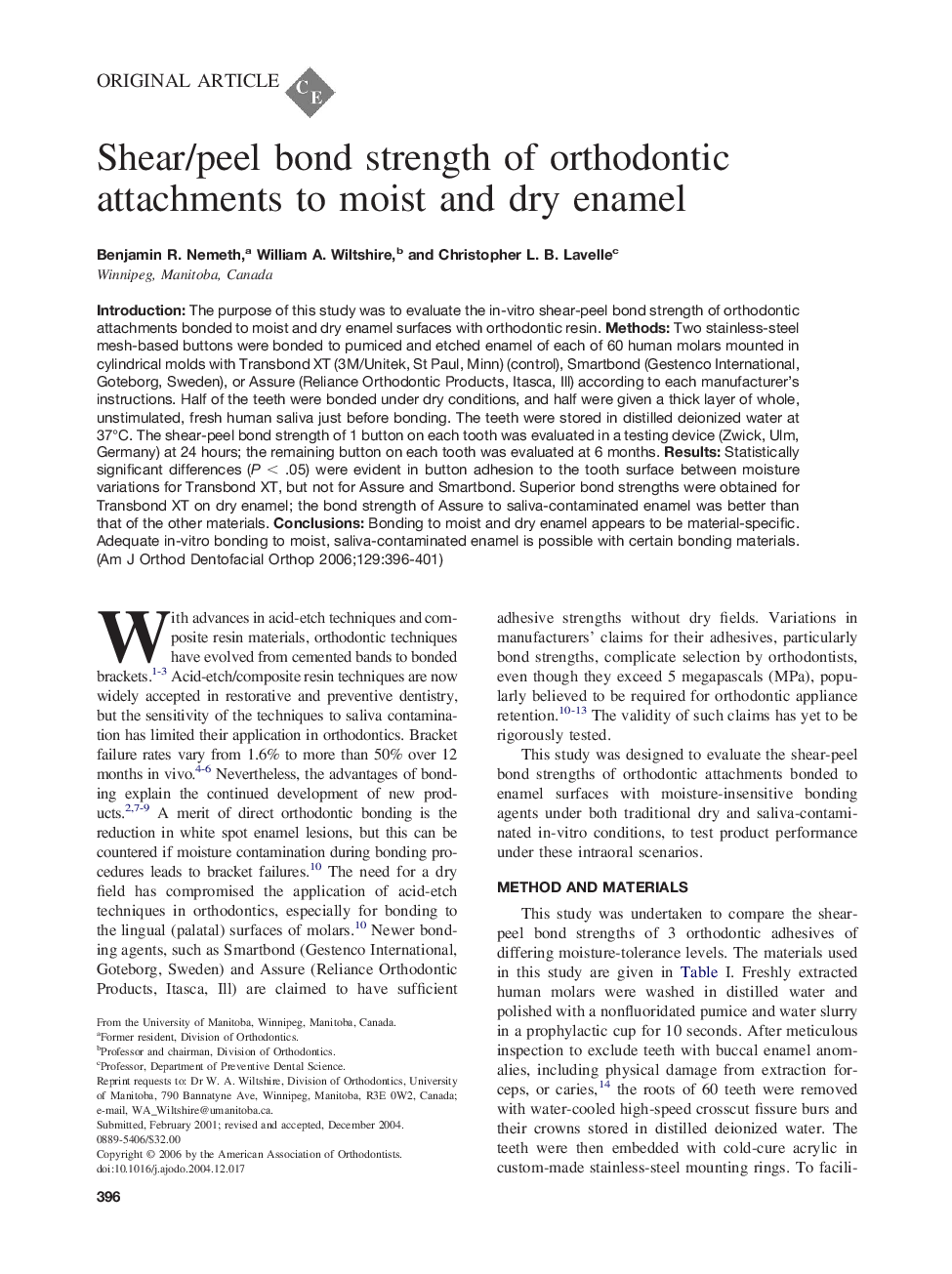| Article ID | Journal | Published Year | Pages | File Type |
|---|---|---|---|---|
| 3120116 | American Journal of Orthodontics and Dentofacial Orthopedics | 2006 | 6 Pages |
Abstract
Introduction: The purpose of this study was to evaluate the in-vitro shear-peel bond strength of orthodontic attachments bonded to moist and dry enamel surfaces with orthodontic resin. Methods: Two stainless-steel mesh-based buttons were bonded to pumiced and etched enamel of each of 60 human molars mounted in cylindrical molds with Transbond XT (3M/Unitek, St Paul, Minn) (control), Smartbond (Gestenco International, Goteborg, Sweden), or Assure (Reliance Orthodontic Products, Itasca, Ill) according to each manufacturer's instructions. Half of the teeth were bonded under dry conditions, and half were given a thick layer of whole, unstimulated, fresh human saliva just before bonding. The teeth were stored in distilled deionized water at 37°C. The shear-peel bond strength of 1 button on each tooth was evaluated in a testing device (Zwick, Ulm, Germany) at 24 hours; the remaining button on each tooth was evaluated at 6 months. Results: Statistically significant differences (P < .05) were evident in button adhesion to the tooth surface between moisture variations for Transbond XT, but not for Assure and Smartbond. Superior bond strengths were obtained for Transbond XT on dry enamel; the bond strength of Assure to saliva-contaminated enamel was better than that of the other materials. Conclusions: Bonding to moist and dry enamel appears to be material-specific. Adequate in-vitro bonding to moist, saliva-contaminated enamel is possible with certain bonding materials.
Related Topics
Health Sciences
Medicine and Dentistry
Dentistry, Oral Surgery and Medicine
Authors
Benjamin R. Nemeth, William A. Wiltshire, Christopher L.B. Lavelle,
